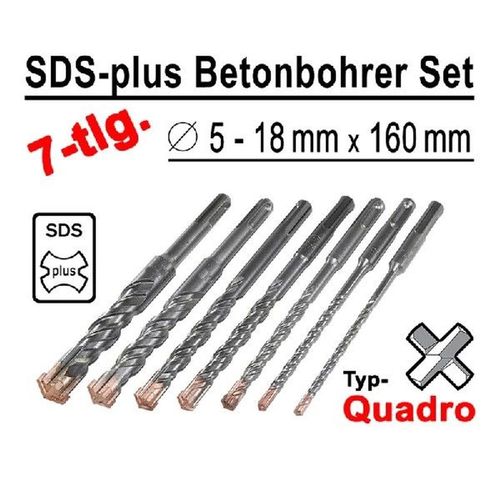
Concrete Drill Bits: A Comprehensive Guide
When it comes to drilling into concrete, the right drill bit is crucial. Concrete drill bits are specifically designed to handle the hardness and density of concrete, ensuring efficient and effective drilling. In this article, we will delve into the various types, features, and considerations when choosing concrete drill bits.
Types of Concrete Drill Bits
Concrete drill bits come in different types, each designed for specific applications. Here are some of the most common types:

| Type | Description |
|---|---|
| Core Bits | Used for drilling holes with a diameter larger than 1 inch. They are ideal for creating anchor bolt holes, conduit holes, and other large openings. |
| Masonry Bits | These bits are designed for drilling holes in brick, block, and concrete. They come in various sizes and are suitable for both hand and power drills. |
| Hammer Bits | Hammer bits are used for drilling into concrete and masonry with a hammer drill. They feature a chisel-like tip that helps break up the material as it drills. |
| Core Bits with Pilot Point | These bits have a sharp, pointed tip that helps guide the bit into the material and reduces the risk of the bit walking off course. |
Features to Consider
When selecting a concrete drill bit, there are several features to consider to ensure optimal performance:
- Material: Concrete drill bits are typically made from high-speed steel (HSS), carbide, or titanium. HSS bits are suitable for general-purpose drilling, while carbide and titanium bits are more durable and suitable for aggressive drilling.
- Tip Design: The tip design of the bit can significantly impact the drilling process. A sharp, pointed tip helps guide the bit into the material and reduces the risk of walking off course.
- Flute Design: The flute design of the bit affects chip removal and cooling. A larger flute size allows for better chip removal and reduces the risk of bit clogging.
- Shank Type: Concrete drill bits come with different shank types, such as SDS-plus, SDS-max, and 1/2-inch hex. Ensure that the shank type of the bit matches your drill’s requirements.
Drilling Techniques
Drilling into concrete requires proper technique to ensure efficient and effective drilling. Here are some tips to help you achieve the best results:
- Drill at the Right Speed: The speed at which you drill can significantly impact the performance of the bit. Too slow, and the bit may overheat and break. Too fast, and the bit may not cut effectively. Consult the manufacturer’s recommendations for the optimal drilling speed.
- Use a Pilot Hole: Drilling a pilot hole before using a larger bit can help guide the bit and reduce the risk of walking off course.
- Keep the Bit Cool: Concrete drilling generates a lot of heat, which can cause the bit to overheat and break. Use a coolant, such as water or oil, to keep the bit cool and extend its lifespan.
- Use the Right Drill: Ensure that your drill is suitable for concrete drilling. A hammer drill is ideal for drilling into concrete and masonry.
Choosing the Right Concrete Drill Bit
Selecting the right concrete drill bit depends on several factors, including the type of material, the size of the hole, and the drilling application. Here are some guidelines to help you choose the right bit:
- Material: For general-purpose drilling, a masonry bit made from HSS is suitable. For more aggressive drilling, consider a carbide or titanium bit.
- Hole Size: For holes larger than 1 inch, use a core bit. For smaller holes, a masonry bit or hammer bit is appropriate.
- Drilling Application: For drilling into concrete and masonry, a hammer bit is ideal





